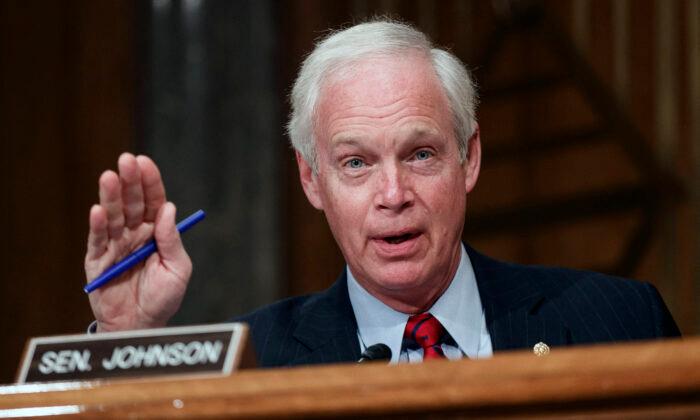U.S. Sen. Ron Johnson (R-Wis.) is expressing dismay over how the Federal Aviation Administration (FAA) responded to his questions about the agency’s handling of pilot health issues.
“How can the FAA maintain safe skies when it turns a blind eye toward pilots experiencing COVID-19 vaccine injuries?” Johnson said in an email sent exclusively to The Epoch Times on Feb. 21.
“Is it willful ignorance that the FAA is aware of only four active pilots experiencing adverse events connected to the COVID-19 vaccine? The American people are not getting the full transparency and honesty from federal agencies that they deserve.”
Not the FAA’s Role
In his Jan. 27 letter to the FAA, Johnson provided specific information about five named pilots with suspected COVID-19 vaccine ill effects; one of the pilots died 17 days after being vaccinated.Johnson wanted to know what steps the FAA has taken or planned to take to investigate whether the five named pilots and others had suffered adverse effects after COVID-19 shots.
Northrup wrote that her agency isn’t in charge of that.
“The Centers for Disease Control and Prevention (CDC) is the responsible agency for tracking and follow up of suspected vaccine adverse events,” she wrote.
Northrup noted that pilots experiencing any medical issues are required to “ground themselves,” seek medical help and report any “significant medical events.”
“FAA is responsible for determining whether that event will have an adverse safety effect,” Northrup wrote.
She also said the agency was “aware of only four potentially vaccine-related adverse events in active pilots.”
Justification For Shots
Johnson noted that, on Dec. 12, 2020, the day after the U.S. Food and Drug Administration authorized COVID-19 vaccines for “emergency use” among the general public, the FAA declared pilots were permitted to take the shots, too.That action surprised many in aviation because pilots are forbidden from taking other emergency-use-authorized drugs.
To justify the drugs’ use in pilots, Northrup listed nine websites about the general safety of the various brands of vaccines. Aviation experts have questioned whether any studies were done on pilots specifically. There were no such studies immediately apparent among the list Northrup provided.
Asked whether the FAA evaluated whether any changes should be made to guidance on COVID-19 vaccines for pilots, Northrup responded that the agency has “continued to monitor the data and determined no change in policy was indicated.”

Heart Standard Change Pre-COVID
Finally, Northrup addressed concerns about the FAA’s decision to change the acceptable range for the “PR Interval,” an indicator of heart health, on pilots’ electrocardiogram tests.The PR Interval measures how long it takes for a pulse to travel from one part of the heart to another. A longer PR Interval could be benign, but it also could be an indicator of heart damage; further tests have traditionally been warranted for readings above 200 milliseconds.
Johnson noted that the FAA cited “new scientific evidence” as a rationale for expanding the acceptable PR Interval to 300 ms in a medical examiners’ guide in late 2022.
That change stirred controversy earlier this year after a researcher from an advocacy group, US Freedom Flyers, discovered it.
Some questioned whether spike proteins from the COVID-19 vaccines or the virus itself might be damaging pilots’ hearts and if the change in standard might cause potential issues to go untested.
Even though the revised standard was never added to the FAA’s guide for medical examiners until 2022, Northrup says the FAA made the change in 2017, “after discussions with our cardiology panel, which included FAA doctors as well as external practicing cardiologists.”
Aviation medical examiners were “alerted” to the change in 2018 and 2019, Northrup said, with a link to a video.
The 2022 revision to the PR interval was the first change to that specific part of the guide since 2016, Northrup said.
The change made on Oct. 26, 2022, was made as a clarification “to match existing training and instructions,” Northrup wrote.
Although some people suspected that the 2022 change may have been designed to hide a growing number of pilots diagnosed with PR Intervals above 210 ms, data from Northrup showed that number actually went down, not up.
Last year, there were 1,712 such cases; in contrast, there were 2,889 cases in 2021 and 2,642 cases in 2020, Northrup wrote.
Asked how many pilots are certified to fly with PR Intervals at the elevated levels, Northrup replied, “We do not know who was currently flying.”





